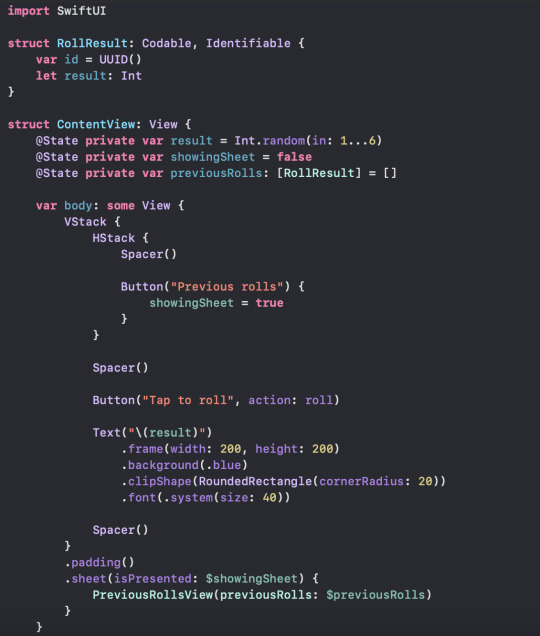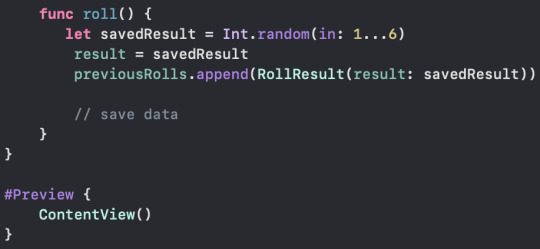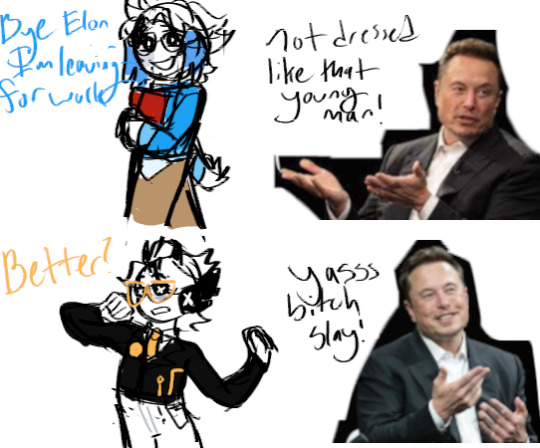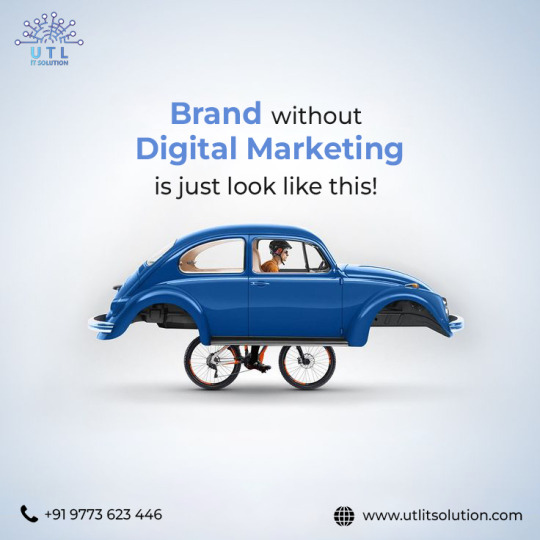#iOS programming
Explore tagged Tumblr posts
Text
How App Interface Design Is Evolving with AI and User-Centric UX Trends

App Interface Design's Evolution: AI and User-Centric UX Trends Consider this: The average smartphone user touches their device over 2,600 times a day. For heavy users, that figure soars past 5,400. Each tap, swipe, and pinch interacts directly with an interface designed to guide them. But are those interfaces truly serving users in 2025, amidst accelerating technological user-centric UX trends and the pervasive influence of AI in design? The traditional ways we conceived of and built interfaces are rapidly transforming, driven by sophisticated algorithms and a renewed, imperative focus on authentic user-centric design.
The AI Paradigm Shift in Interface Creation
Artificial intelligence isn't merely a tool add-on; it signifies a profound paradigm shift in how we approach the very foundations of app interface design. Overtly, AI automates routine tasks. Subtly, it augments creativity, analyzes colossal datasets with unprecedented alacrity, and stands poised to recalibrate the designer's role entirely. This isn't science fiction anymore; it's the operating reality for forward-thinking design teams.
AI Assisting Design Workflows
Integrating AI assistance into workflows offers tangible improvements in efficiency and opens avenues for novel design possibilities.
Automation of Repetitive Tasks: Tedious activities such as image slicing, code generation for basic components, or initial layout variations can be handled by AI. This frees designers to concentrate on more complex problem-solving, creative conceptualization, and strategic thinking. Think of AI not as replacement, but as a highly efficient junior assistant handling the groundwork.
Generating Design Variations: Based on established brand guidelines, user data, or even initial wireframes, AI algorithms can generate a myriad of design options in moments. This velocity allows for rapid iteration and comparative analysis, potentially unveiling design directions a human might not have considered within the same timeframe.
Predictive Analytics for User Behavior: AI's capacity to sift through vast quantities of usage data identifies patterns and predicts user actions with increasing accuracy. This predictive power directly informs design decisions, allowing interfaces to pre-empt user needs or present information most relevant to an individual's predicted journey within the application.
Ethical Considerations and Bias Mitigation
As AI becomes more entrenched in the design process, acknowledging and actively mitigating inherent biases is absolutely paramount. AI models are trained on data, and if that data reflects societal biases (racial, gender, ability, etc.), the AI will perpetuate them in its design outputs.
Vigilance is required to audit the data sources used for AI training.
Testing AI-generated designs across diverse user demographics is crucial to identify and rectify unfair or exclusionary outcomes.
Maintaining human oversight in crucial decision points of the design process safeguards against automated discrimination or ethically questionable design patterns. Designers become stewards, ensuring the AI serves human well-being and inclusivity.
The Core of User-Centricity in 2025
While technology sprints ahead, the raison d'être of design remains constant: serving the user. User-centric UX trends are less about adopting flashy tech and more about a deeply empathetic approach that prioritizes genuine human needs, contexts, and emotions. In 2025, "user-centric" holds a more nuanced, sophisticated meaning than ever before.
Understanding Evolving User Needs
User expectations aren't static; they morph with technological fluency and societal shifts. A truly user-centric design understands this fluidity.
Hyper-Personalization: Beyond simply using a user's name, personalization now demands interfaces that adapt content, features, and even visual style based on real-time context, historical usage, preferences, and predicted needs. This requires a granular understanding of individual users, facilitated by AI analysis.
Accessibility as a Universal Standard: Designing for accessibility is no longer an afterthought or an optional feature; it is a fundamental requirement. This encompasses not only compliance with guidelines (like WCAG) but designing intuitively for users with diverse cognitive, visual, auditory, and motor abilities from the outset. Inaccessible design effectively excludes large potential user bases.
Emotional Design (Kansei UX): Moving beyond usability, designers now consider the emotional resonance of an interface. Does it feel joyful, trustworthy, calming, exciting? Kansei engineering, originating in Japan, studies how users feel about products. Applying these principles to app interface design fosters deeper user engagement and loyalty by consciously eliciting positive emotional responses.
Measuring and Iterating on User Experience
Good design isn't guesswork; it's an iterative process informed by data and direct user feedback. Measuring the efficacy of designs is foundational to refinement.
Employing robust analytics to track user flows, completion rates, points of friction, and feature engagement.
Conducting diverse forms of user research: usability testing, interviews, surveys, and contextual inquiries.
Utilizing A/B testing and multivariate testing to compare design variations head-to-head based on quantifiable user behavior metrics.
Establishing continuous feedback loops, allowing designers to remain responsive to evolving user sentiments and needs over the product lifecycle.
Synergizing AI and User-Centric Approaches
The true power emerges not from choosing between AI-driven or user-centric design, but by strategically intertwining them. AI, when wielded through a user-centric lens, can elevate interfaces to new heights of relevance, adaptability, and intuitiveness. Conversely, user-centric design principles provide the ethical and humanistic framework that prevents AI from creating sterile, unhelpful, or biased interfaces. This confluence marks the frontier of advanced app interface design.
Designing Adaptive Interfaces
Adaptive interfaces change dynamically based on individual users, their context, and even their momentary state. AI is the engine that makes this feasible on a large scale.
Real-time Customization via AI: Imagine an interface that changes button size for a user walking in bright sunlight, or adjusts complexity for a novice versus an expert user within the same application. AI processes data streams (device sensors, usage history, explicit preferences) to make these interface adjustments happen in the moment.
Contextual Awareness: An interface that knows you're driving might simplify controls; one that knows you're in a quiet library might suggest different features. AI enables applications to understand and react to the user's current environmental and situational context, presenting information and interactions most appropriate to that specific scenario.
Leveraging AI for Deeper User Insights
AI's analytical capabilities allow us to move beyond simple clickstream data to glean profound insights into user motivations, difficulties, and implicit desires.
Beyond Basic Analytics: Instead of just seeing where users click, AI can help understand why they might be hesitating at a certain point, what task they are likely attempting based on partial actions, or how their usage patterns compare to others with similar profiles.
Identifying Implicit Needs: Users often struggle to articulate exactly what they need or want. AI can analyze vast datasets – including user support interactions, social media sentiment, and aggregate usage patterns – to uncover latent needs or points of frustration that users themselves haven't explicitly mentioned.
Building Trust in AI-Powered UX
As AI's role becomes more overt (e.g., a chatbot, a recommendation engine, an interface that visibly rearranges itself), building and maintaining user trust becomes critical.
Transparency in AI Decisions: Users appreciate knowing why something is being recommended, why the interface changed, or why certain options are presented. Explaining the basis of an AI-driven interaction fosters confidence. Avoid 'black box' scenarios where the AI's actions seem arbitrary.
Maintaining Human Oversight: For critical decisions or sensitive interactions, the system should allow for human intervention or fallback options. Users need assurance that they aren't solely at the mercy of an algorithm and can access human support if needed. This hybrid approach leverages AI's strengths while providing a safety net and building trust.
Practical Guide: Navigating the Evolution
Making this transition isn't automatic. It requires a deliberate approach to strategy, a willingness to adapt, and a proactive stance against common pitfalls. Think of this section as laying out actionable considerations for design teams in 2025.
Strategies for Adoption
Successfully integrating AI in design and doubling down on user-centric design demands a multifaceted strategy.
Education and Upskilling: Design teams require new literacies. Understanding basic AI concepts, data interpretation, ethical AI principles, and advanced research methodologies are no longer niche skills; they are becoming foundational. Organizations must invest in continuous learning.
Iterative AI Integration: Do not attempt a monolithic overhaul. Begin by integrating AI into specific, well-defined areas of the design workflow or user experience where its value is clearest (e.g., content personalization, component generation, preliminary usability analysis). Learn from these early efforts and expand incrementally.
Collaboration (Designers, Data Scientists, Users): The future of design is profoundly collaborative. Designers must work hand-in-hand with data scientists to understand the potential and limitations of AI. Critically, users must be involved throughout the process – not just as passive subjects of analysis, but as active participants providing feedback on AI-driven features and adaptive interfaces.
Common Pitfalls to Avoid
The path is fraught with potential missteps. Awareness prevents stumbling.
Over-Reliance on AI: Allowing AI to dictate design without human critique risks generic, soulless interfaces that lack true creativity or empathetic understanding. AI should augment, not supplant, human design intelligence.
Neglecting Human Testing: Believing AI analysis replaces direct human user research is a grave error. AI reveals patterns; qualitative user testing reveals why those patterns exist, uncovers nuances, and captures emotional responses AI cannot.
Ignoring Ethical Implications: Deploying AI-powered interfaces without rigorous ethical vetting can lead to biased experiences, erosion of user trust, and potential reputational damage. Prioritize fairness, transparency, and user control from concept to deployment.
Expert Perspectives and Future Trajectories
Looking ahead, the evolution promises interfaces that are profoundly intuitive, adapting not just to explicit commands but implicit desires and cognitive states. A prominent design leader remarked, "We are moving from interfaces a user learns to navigate, to interfaces that learn the user. The system adapts to you, not the other way around." Another researcher commented, "Ethical frameworks are no longer peripheral; they are the bedrock upon which we build AI-augmented experiences. Without trust and fairness, sophisticated interfaces will simply fail." Emerging areas like Neuro-adaptive UX, which seeks to interpret cognitive signals to tailor interfaces in real-time, or the integration of AR/VR elements facilitated by AI's spatial understanding, signal even more profound shifts on the horizon. The focus will intensify on creating interfaces that feel less like tools and more like seamless extensions of human thought and intent. My personal perspective is that while the technical possibilities are nearly boundless, the most impactful interfaces will be those that remain grounded in empathy, equity, and genuine value creation for the end-user, resisting the temptation of technology for technology's sake.
Key Takeaways
App interface design is fundamentally changing due to AI and refined user-centric UX trends.
AI automates design tasks, generates options, and predicts user behavior, requiring new ethical vigilance.
User-centric design in 2025 mandates deep personalization, universal accessibility, and attention to emotional response.
The synergy of AI and user-centric design enables adaptive, contextually aware interfaces and deeper user insights.
Success requires educating teams, integrating AI iteratively, fostering collaboration, and diligently avoiding pitfalls like neglecting human testing.
The future points toward even more intuitive, perhaps even cognitively aware, interfaces, demanding a persistent focus on ethical, human-first design principles.
Frequently Asked Questions
How is artificial intelligence changing the design role?
AI Automates Mundane Tasks in Design The role pivots from execution toward strategic oversight, prompt crafting, and ensuring ethical outcomes.
What defines contemporary user focus in design today?
Emphasis Placed on Personalized Experiences and Access Design prioritizes individual needs, real-time context, comprehensive accessibility, and emotional impact.
What specific ways does AI benefit user analysis?
AI Provides Deeper Analytical Viewpoints Beyond clicks, it aids in understanding why actions occur, predicting needs, and revealing unspoken frustrations.
Are there major risks integrating artificial intelligence in user interface?
Key Concerns Include Bias and Reliance Excess Risks involve perpetuating data biases, neglecting human insight, and creating interfaces lacking emotional depth.
How should teams prepare for shifts in interface building?
Teams Must Learn Adapt and Stay Current Prepare through continuous education, iterative AI integration trials, and robust interdisciplinary cooperation efforts.
Recommendations
To effectively navigate the dynamic evolution of app interface design, prioritizing adaptation and learning is paramount. Embrace the potential of AI in design as a powerful collaborator, not a replacement. Simultaneously, deepen your commitment to user-centric design, anchoring every technological stride in genuine human needs and experiences. Focus on building ethical safeguards into your process from the outset. The fusion of intelligent systems and profound empathy will define the most impactful and successful interfaces of the future. Ready to future-proof your design strategy and create truly adaptive, user-loved applications? Connect with our team today to explore how leveraging the latest trends can elevate your product experience.
#Application programming#Flutter development#iOS programming#React Native development#Kotlin programming#App creation#Full-stack developers#Swift coding#Android Programming#Application programming experts#App interface design#Cross-platform apps
0 notes
Text
Công ty Nhật tuyển lập trình viên iOS và C/C++
Công ty mình cần tìm thêm đồng đội cho 2 mảng mobile và nhúng. Yêu cầu: Vững về OOP Dùng tốt git hoặc svn Có kĩ năng giải quyết vấn đề (problem solving) Có tinh thần cầu tiến Các điểm cộng: Có khả năng tự học/tự search/dùng chatGPT, Bard, Bing tốt Có dự án trên Github Có ý định định cư lâu dài tại Nhật Xem thêm…

View On WordPress
0 notes
Text

OMG... far too excited seeing this dev'd
"Brainfuck is an esoteric programming language created in 1993 by Swiss student Urban Müller. Designed to be extremely minimalistic, the language consists of only eight simple commands, a data pointer and an instruction pointer."
21 notes
·
View notes
Text
5-27-24: Day 95
Day 95 consisted of another milestone and the seventh consolidation day, reviewing what I learned, key points, and a challenge to build another complete app from scratch by ourselves:
Key points:
Functional programming
Result
Challenge: Build an app that helps users roll dice then store the results they had. At the very least you should let users roll dice, and also let them see results from previous rolls:



This is as far as I got. It's a skeleton, but I plan to expand on it much further in the future and make it a portfolio project.
Day 95 quote: "Being challenged in life is inevitable, but being defeated is optional." - Roger Crawford
#day 95#100 days of swiftui#ios#ios development#software development#software engineering#programming#coding#codeblr
19 notes
·
View notes
Text

A small vector art patch for my friend's Kerbal Space Program series Youtube! It's been a long time since I've done anything in this style, so it was certainly a challenge. I had fun, though!
Nearing the end of my backlog, which I'm very excited about!
As always, image ID will be in the alt text and reblogs. :)
#digital art#artists on tumblr#tolbachik art#space art#my art#space#digital painting#space exploration#moon#planet#jupiter#nasa#juno#esa#galileo#io#europa#ganymede#callisto#galilean moons#vector art#space artwork#mission patch#kerbal#kerbal space program
17 notes
·
View notes
Note
hello clarre. may i request a vimalion wei shu in your style? i am very normal about him, and i think you'd draw him super prettily.
as always, i love your coloring, and i've really liked the pjsk fanart you've been posting! hopefully things get less busy for you sometime
Yes!! I also think his design is super nice, and I immediately recognized ricedeity's art style (lol) I hope it's to expectations!
I've just gotten back from a trip so now I can draw more (before midterms, at least wahaha)

#wei shu synthv#io's box of requests#drawing looking kinda different#because i got a new art program
4 notes
·
View notes
Text
Just spent an hour+ on QuickAssist with someone from Microsoft tech support who said the problem I had was "weird" and eventually gave up and recommended a clean install. I feel special ☺️
#she was very helpful actually. i didn't realise i could just reinstall Windows in Japanese.#silly that there's no other way to fix the issue tho#why not iOS or Linux? i've tried the latter & i lack the requisite expertise. and i need Windows-compatible programs for school/work
3 notes
·
View notes
Text

Poor deer's Roku remote
#deerbleats#I will die before I download that fucking app#ios shortcuts are annoying to edit if you know actual programming but theyre nice for these quick proofs of concept ig
3 notes
·
View notes
Text
either i got really good at ib all of a sudden or moderation is going to hit my scores like a truck
#19/20 predicted on my hle#6 on my english IO#predicted NINE on my tok essay???#ib#ib diploma program#ibdp#ib diploma#ib year 2#ib student
3 notes
·
View notes
Text
IOS legit the worst thing to ever happen to technology
#love how procreate is really good but its fucking ios only & apple has cracked down so extensively on emulation#that theres like. seemingly no way to emulate ios shit on android#so you gotta buy their stupid fucking bullshit to be able to use one of the most popular drawing programs#awoo
3 notes
·
View notes
Text


okay i haven't drawn cloutchase in a bit so forgive me if this looks funky. and i can almost guarantee someone else has thought of this. but as SOON as i saw the twitter X rebrand this is the FIRST thing I thought of LMAO (with the original next to it for reference)
#Socialstuck cloutchase#Twitter cloutchase#Cloutchase#Twitter X#yeah I know his tie isn't actually yellow but shhh SHHHH it looked better. when i was coloring so#ALSO i got an ACTUl art program in-between my posting gap so im NOT using magma (or Aggie . io ) anymore this is AMAZING#gimp has my WHOLE heart#forgive me for being late to the twitter X party I've been deep in the throws of hyperfixations LMAO
49 notes
·
View notes
Text
Free Flutter Resources
for whoever might need them

https://flutter.dev/learn
https://dart.dev/
Flutter Crash Course - Traversy Media
Free Flutter Course (Full Flutter Course for Beginners) - Vandad Nahavandipoor
Fun with Flutter
https://github.com/flutter/samples
I'm currently revising Flutter to teach in my college's robotics society's classes (we are planning to start an app dev domain) and these are a few resources that I found handy, so I thought I'd share(?)
8 notes
·
View notes
Text

Navigating the Complex World of Mobile App Development
In today’s tech-driven world, mobile apps have become a cornerstone of how we connect, work, and play. Whether you’re launching a startup or enhancing an established business, building a mobile app can be a game-changing move. One of the most important decisions you’ll face is choosing the right technology stack. The tech stack you pick will directly influence your app’s performance, scalability, and overall user experience.
What Exactly Is a Tech Stack?
A tech stack is essentially the set of tools, programming languages, and frameworks you use to build your app. For mobile apps, the stack typically consists of three main components:
Front-End: This is what users see and interact with — the app’s interface.
Back-End: This is the engine under the hood — handling data storage, processing, and integrations.
Platform: The operating system your app is built for, like iOS, Android, or both.
Key Considerations When Picking a Tech Stack
Let’s dive into the options and what you should think about when deciding which tools to use.
Platform Options
Native Development
Languages:
iOS: Swift or Objective-C
Android: Kotlin or Java
Pros:
Best-in-class performance.
Full access to device features like cameras, sensors, and GPS.
Cons:
Higher costs.
Longer development time if building for both iOS and Android.
2. Cross-Platform Development
Frameworks:
React Native (JavaScript and React)
Flutter (Dart)
Xamarin (C#)
Pros:
Faster development.
Reusable code for both iOS and Android.
Generally lower costs.
Cons:
Slightly lower performance compared to native apps.
Limited access to some advanced native features.
3. Hybrid Development
Tools:
Ionic (HTML, CSS, JavaScript)
PhoneGap/Cordova (HTML, CSS, JavaScript)
Pros:
Easy to learn and work with if you’re familiar with web development.
Leverages standard web technologies.
Cons:
Performance is not as strong as native or well-optimized cross-platform apps.
User experience can feel less “native.”
How to Make the Best Choice for Your App
Your decision will depend on several factors. Here are some key points to consider:
App Complexity:
For simple apps, cross-platform frameworks like React Native or Flutter are great choices.
For feature-heavy or complex apps, native development might be the way to go.
Time to Market:
If you’re on a tight schedule, cross-platform tools can speed up the process.
Budget:
Native development can be pricey since you’ll likely need separate teams for iOS and Android.
Cross-platform and hybrid options are usually more cost-effective.
Performance Needs:
Native apps deliver the best performance, but modern cross-platform frameworks have come a long way and can handle most needs efficiently.
Team Expertise:
Leverage the skills your team already has. If they’re experienced in JavaScript, for example, React Native might be a natural fit.
Final Thoughts
Choosing the right tech stack is a pivotal step in mobile app development. It’s about finding the perfect balance between your project’s requirements, your budget, and your team’s expertise. By weighing factors like app complexity, performance, and cost, you can make a well-informed choice that sets your app up for success. Remember, a solid tech stack is the foundation of a scalable, user-friendly, and high-quality app.
#mobile app development#android development#ios development#hybrid app development#cross platform app development#technology#software development#programming
2 notes
·
View notes
Text

Website or Mobile App for business? The Million-Dollar Question Dive deep into the pros and cons, cost considerations, and audience preferences that will shape your digital future.
https://link.medium.com/8hYuZGZK7Jb
#software engineering#programming#android#ios#ios app development#phone#website#web design#web development#web developers#mobile app development#google
3 notes
·
View notes
Text
4-20-24: Day 64
Day 64 consisted of 3 tutorials:
1. Loading photos from the user’s photo library
2. How to let the user share content with ShareLink
3. How to ask the user to leave an App Store review
Day 64 quote: "[The postage stamp’s] usefulness consists in the ability to stick to one thing until it gets there." - Josh Billings
#day 64#100 days of swiftui#ios#ios development#software development#software engineering#programming#coding#codeblr
3 notes
·
View notes
Text

UTL IT Solution offers Digital marketing services to help businesses reach their online goals. Their services include social media management, search engine optimization, and online advertising strategies. They work with clients to create customized marketing plans that drive traffic and enhance brand visibility online.
#appdevelopment#appdeveloper#webdevelopment#mobileappdevelopment#appdesign#android#ios#app#mobileapp#webdesign#firstideaweb#lahore#mobileapps#digitalmarketing#coding#programming#softwaredevelopment#androiddeveloper#business#developer#seo#developers#website#contentmarketing#Digitalmarketing#SEO#blogging#marketing#branding#marketingtips
3 notes
·
View notes